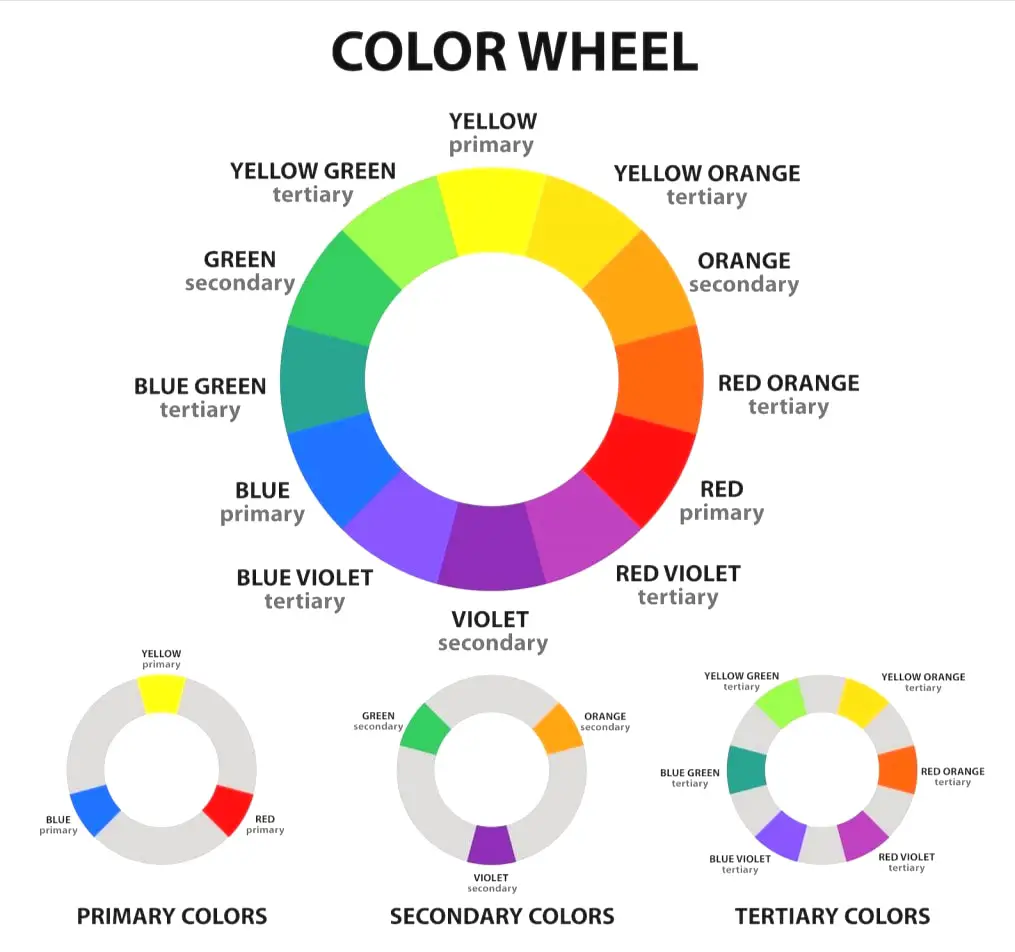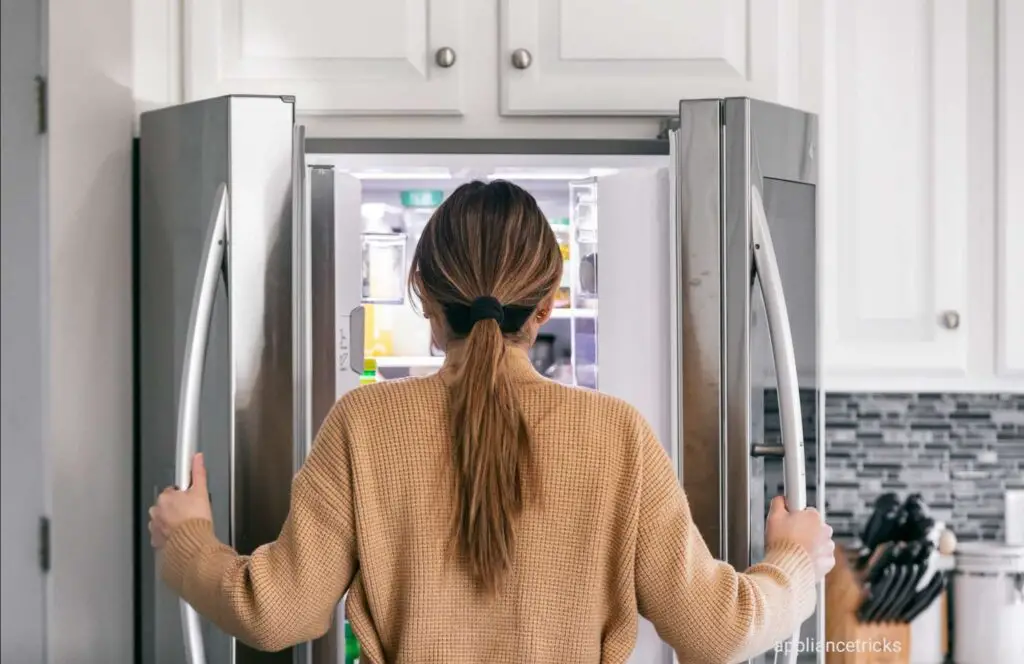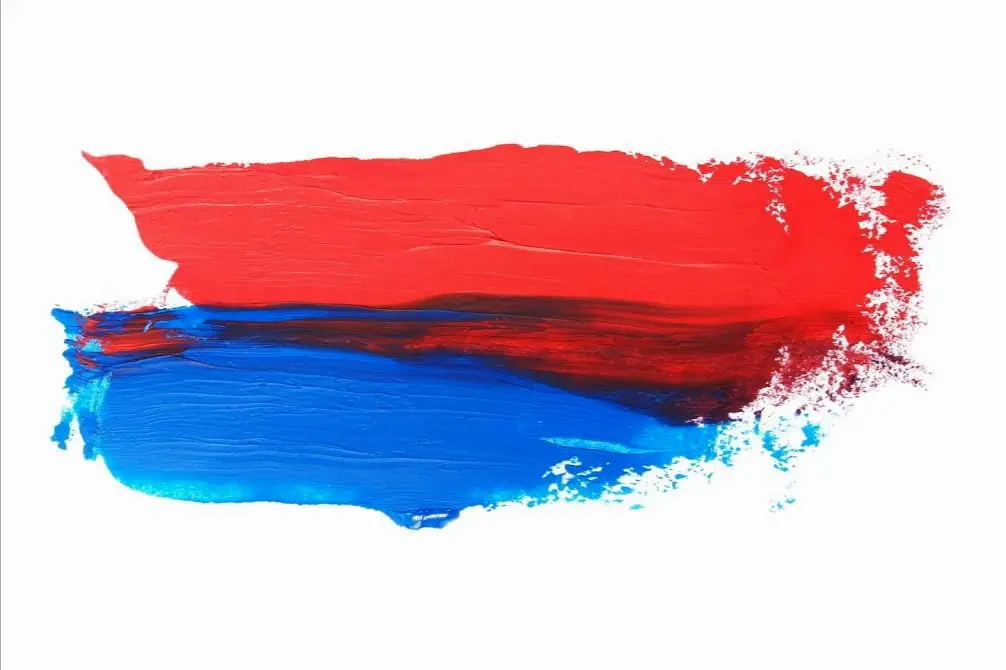What Does Blue And Purple Make Together? Typically, they result in various shades of violet. Depending on the proportions, you might get hues like indigo or periwinkle.
Creating a seamless blend of colors arouses curiosity among artists and designers alike. Merging the calming essence of blue with the regal presence of purple can produce an intriguing and captivating spectrum. This combination is a powerful tool in visual storytelling, evoking emotions and setting atmospheres through color contrasts and harmonies, from the whispers of lavender to the deep tones of the Navy. The blue-purple palette is a testament to the endless possibilities within color theory and design. It encourages experimentation and creativity, offering various shades for creators to draw upon for their compositions.

The Enchanting World Of Color Mixology
Imagine diving into a sea of color where the possibilities are endless. This is the enchanting world of color mixology, where creativity blooms and exciting new hues emerge. When we blend colors like blue and purple, we unlock a spectrum of visually stunning derivatives. Let’s explore how these colors combine to create a captivating palette of new shades.
Color theory is a cornerstone of visual arts that teaches us how different colors interact, mix, and create new ones. It is crucial to understand how to produce the shade you desire. Let’s break down the basic principles of color theory and its components – Primary, secondary, and tertiary colors.
Primary, Secondary, And Tertiary Colors
In color theory, colors are categorized based on their relationships and origins. Here’s a simple breakdown:
- Primary Colors: Red, blue, and yellow. These cannot be made by mixing other colors.
- Secondary Colors: Green, orange, and purple, created by mixing two primary colors.
- Tertiary Colors: Result from the mixture of primary and secondary colors. Examples include blue-green and red-violet.
When we mix blue (a primary color) with purple (a secondary color made from red and blue), we delve into tertiary colors. Depending on the shades and proportions, we can create various hues of rich and deep violets or soft, soothing lavenders. These colors are not just beautiful to look at but also carry significant meanings and emotions in art and design.
Blue Meets Purple: A Tertiary Tale
Imagine dipping your brush into sea blue and a sky of purple. As they come together, a new color story begins. This tale of tertiary magic unfolds a palette that dances between the hue of oceans and the whisper of dusk.

Understanding The Purple Spectrum
Purple lives between cool blue and warm red. It can lean towards either side, creating a spectrum filled with variety. This table showcases the distinct personalities within the purple family.
Lavender Plum Violet
Light and airy, Deep and rich, A perfect balance
Variations Of Blue-purple Mixes
Different shades of blue and purple blend to form a unique faction of colors. Here is a breakdown of what happens when you play with these shades:
- Navy Blasts with mystery when mixed with purple.
- Sky Blue and purple create a softer, more whimsical lilac.
- Indigo, holding its own deep blue-purple identity, invites a regal sense.
Artistic Applications Of Blue-purple Hues
Exploring the myriad shades between blue and purple unfolds a unique spectrum of hues, each with charm and utility. Artists often delve into this color range to discover new emotions and perspectives. Let’s dive into how these blue-purple hues can enhance the art.
The Role In Painting And Design
In painting design, blue and purple mixes manifest as mesmerizing hues that capture the beholder’s eye. Deep indigos and soft lavenders emerge, providing designers with a versatile palette. These colors are widely used in various applications:
- Graphic Design: For digital art, where vibrancy is crucial.
- Fashion Design: These hues often appear in clothing for their elegance.
- Interior Decorating: For a touch of sophistication in décor.
Artists carefully select these colors to shape the visual feel of their creations.
Conveying Mood And Atmosphere With Color
Colors carry the power to influence the mood of an artwork significantly. Blue and purple blends hold particular sway in this regard:
Hue Mood/Atmosphere
Deep Blue-Purple Evoke mystery and depth.
Brighter Lilac Imbue a sense of calm and playfulness.
By blending blue and purple, artists can control the emotional undertones of their work.
What Does Blue And Purple Make

The Science Behind The Shades
Mixing colors can feel like a magical process. Blue and purple, the two most incredible colors in the palette, create mesmerizing shades. But there’s actual science behind how these colors mix.
How Light And Pigment Differ In Color Mixing
Color mixing can happen in two ways: through light or pigment.
- Light, such as from your computer screen, mixes red, green, and blue to create colors.
- Pigments mix differently, combining substances like paints or inks to create various shades.
When you mix blue and purple pigments, you blend blue with blue-based purple, altering the hue towards a unique variation of Navy or violet.
Perception Of Color Mixes In The Human Eye
Understanding how we see color helps us appreciate the blue and purple mix.
The human eye perceives color when light hits an object. Specific wavelengths are absorbed or reflected, and our eyes interpret these wavelengths as color.
They mix blue and purple pigments, resulting in a color that reflects their combined wavelengths, appearing as a new unified shade to our eyes.
Color Wavelength Perceived Color
Blue 450–495 nm Navy or Violet
Purple 380–450 nm
Cultural And Symbolic Meanings Of Violet Tones
When blue and purple paint blend, they create violet tones. These tones are more than a feast for the eyes. They hold deep cultural and symbolic significance. From royal robes to modern brands, violet shades whisper tales of luxury, spirituality, and creativity.
Purple and blue have fascinated cultures for centuries. In ancient times, garments dyed with Tyrian purple signified power and status.
- Greeks associated purple with the gods and wisdom.
- Romans reserved purple togas for the elite.
- In China, blue was the emperor‘s hue.
This blend of history and art shows why violet tones resonate with deep meaning.
Today, violet shades capture our imagination in fashion and media. These colors are everywhere, from luxury brands to animated heroes.
Industry Violet Represents
Fashion Exclusivity, Trend-setting
Film and TV Mystery, Fantasy
Branding Innovation, Creativity
In fashion shows, violet pieces turn heads with their daring charm. Blockbuster movies use these hues to craft otherworldly visuals. Brands choose violet to appear cutting-edge and vibrant.
Violet tones are more than a color blend; they symbolize our deepest aspirations and dreams.
What Does Blue And Purple Make
Exploring The Palette: Techniques For Perfecting The Mix
Welcome to a vibrant journey through the world of color! As we explore the palette, artists and enthusiasts discover the magic of mixing hues. When blue and purple dance together on the canvas, they create a symphony of colors, but what precisely do they produce? The answer awaits, along with essential techniques for perfecting the mix.
Mixing Tips For Artists
- Start with quality pigments: Begin with pure, high-grade blue and purple paints for the best results.
- Understand color bias: Blue can lean towards green or violet; purple might lean towards red or blue. Choose accordingly.
- Test ratios: Before committing to your canvas, use a palette to test how different ratios of blue and purple combine.
- Take notes: Keep track of your mixing process to recreate the perfect shade in future projects.
- Clean brushes thoroughly: Switching between colors? Make sure your brush is clean to avoid muddying your beautiful mix.
-

What Does Blue And Purple Make
The Impact Of Color Proportions And Mixing Mediums
Getting the mix right isn’t only a matter of technique; it’s also about the ratio of colors and the medium used for mixing.
Color Proportion Resulting Shade
1:1 Blue to Purple : A balanced, deep violet
2:1 Blue to Purple A bluish violet, resembling indigo
1:2 Blue to Purple A purplish violet, leaning towards lavender
Furthermore, the type of medium—be it oil, acrylic, or watercolor—plays a pivotal role. Oil may offer a rich depth, acrylic could lend a vibrant punch, and watercolor might provide a subtle transparency.
- Match the medium to your project goals.
- Consider the drying time and texture effects of different mediums.
- Mix mediums for innovative results, but proceed with caution.
What Does Blue And Purple Make
Frequently Asked Questions Of What Does Blue And Purple Make
What Color Do Purple And Blue Make?
You are mixing purple and blue, resulting in various shades of violet, such as indigo or periwinkle.
What does blue and purple make?
You are mixing purple and blue, resulting in various shades of violet, such as indigo or periwinkle.
What does purple and blue make?
You are mixing purple and blue, resulting in various shades of violet, such as indigo or periwinkle.
Pink and Blue Make What Color ?
Mixing blue and pink paint typically creates a purple hue. The specific shade varies depending on the paints’ shades and proportions.
.
Conclusion
What Does Blue And Purple Make ? What colors do purple and blue make? We’ve discovered that the union of blue and purple paints a picture of creativity in color mixing. Delving into combining hues, we spin a palette that births shades from periwinkle to deep violet. Whether you’re a painter, designer, or simply a color enthusiast, remember that the blend of blue and purple extends beyond the canvas, infusing projects with depth and sophistication.
Embrace the journey of mixing colors; the results are as limitless as your imagination.


